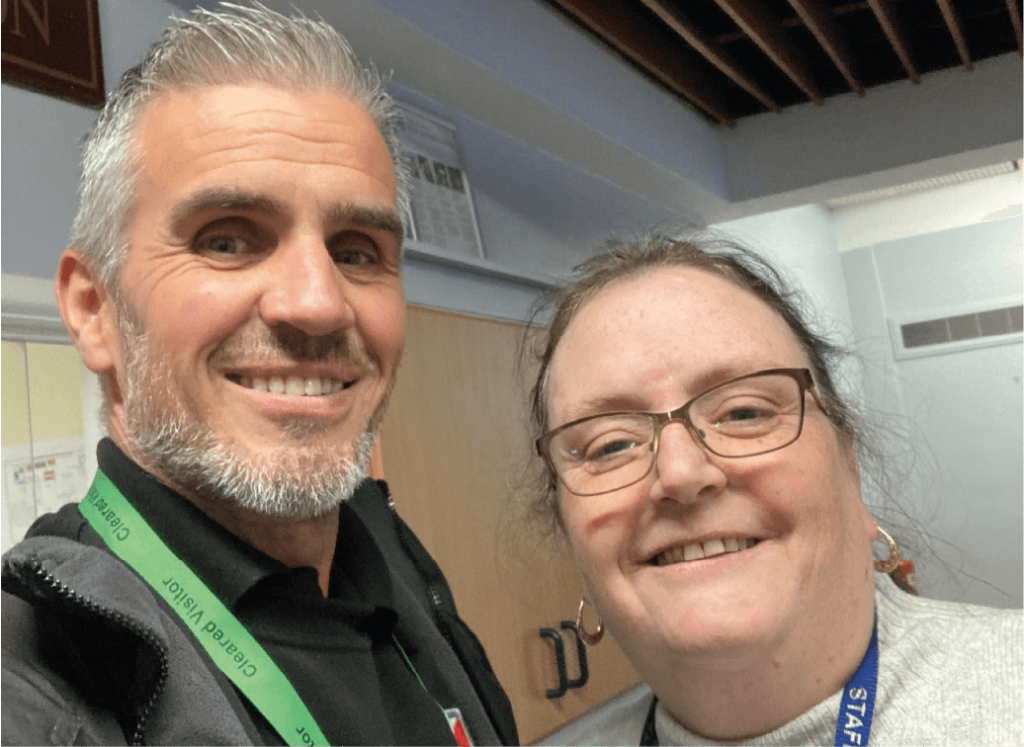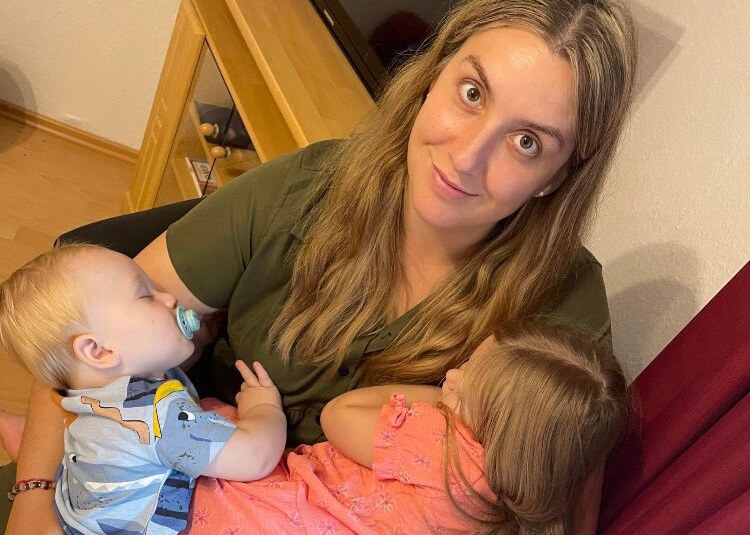First Aid Schools
Not All Heroes Wear Capes
At First Aid Schools we firmly believe that teaching essential life-saving skills is a must for everyone. Here, we present real-life accounts of how even basic first aid training can make a difference and even save a life.


Sharon’s Story
November saw the start of our annual visits to McAuley for the first of our training for their fantastic 6th form students. However it was Sharon on reception who stole the limelight.
Sharon is a former colleague of mine and one of the funniest people I’ve ever worked with. Having caught up for a few minutes during the day she told me of her heroics in saving the life of a Year 8 pupil just a few weeks earlier. The student was eating lunch in the dining area when they suddenly started holding their throat, waving their arms and panicking. An inability to speak and paleness washed over the teenager’s face, and Sharon was the first adult on the scene. She knew what to do thanks to her first aid training, remaining calm and undertaking back slaps and abdominal thrusts thoroughly and effectively. After 5 back slaps had no effect it took 3 thrusts to force out the food blocking the airway, triggering a huge deep breath. A breath of life!
Very often we take for granted our ability to breathe freely. We rush our food, we talk while we eat, and nowadays more than ever we eat on the move. All of these things prevent us from chewing our food properly. We tell our young children not to do them because they can choke. Yet here we are often demonstrating the opposite. Choking can happen in an instant and it is frightening.
Being trained in how to deal effectively with someone who is choking is both physically and mentally tough. Many people panic. Sharon didn’t. She doesn’t see it like this but she is a hero. She hardly told a soul and just got on with her day-to-day tasks. Well done, Sharon!
Would you know what to do or would you panic?
One winters day in 2023, Ebony began her part-time shift as an assistant at a local McDonald’s restaurant. Undertaking the usual tasks of serving food, cleaning tables and general customer service she certainly did not envisage CPR and using a defibrillator to be added to the list. Yet as is the norm in situations of this nature – we don’t expect it! We rely on instinct, knowledge and confidence. Fortunately, Ebony and her colleagues had these in abundance.
A customer burst through the door shouting and pointing that a gentleman (possibly in his 50s) had collapsed at the bus stop across the road. ‘Heart attack’ were the words used in the description. Ebony and two colleagues grabbed the defibrillator that McDonald’s luckily had on-site and briskly made their way across the road.
On arrival, it was clear the gentleman was not in a good way. Checks were carried out and, with no RESPONSE, zero difference from opening his AIRWAY, and no sign of NORMAL BREATHING it was clear the man was in trouble. “His face had lost all colour. He was blue” explained Ebony. The three workers began CPR by pushing on the chest at a speed of two compressions per second. Keeping the heart pumping at this speed is tiring. Therefore all three constantly rotated and communicated as they did, to minimise time spent off the chest.
Ebony, who had recently undertaken first aid training as part of the enrichment she receives as a student at Wickersley Sixth Form – a part of Wickersley School and Sports College and a member of Wickersley Partnership Trust, took control when setting up the defibrillator. “Using a defibrillator in different situations was a key element of the training we received both in Y12 and Y13. It really helped my understanding and gave me confidence when it was happening for real.” Ebony stressed.
The defibrillator gave a shock and there was no difference. The three staff continued CPR as they waited for the defib to re-analyse and shock again. This continued for several shocks. There was a big gasp on the third or fourth as the gentleman inhaled for the first time in almost 10 minutes. He slowly opened his eyes, began gentle movements and took hold of his chest. The three staff had just saved his life. An ambulance arrived shortly after and paramedics took over, but the hard work had already been done!
There were sweat and tears with time seemingly standing still, yet the team of three just got on with it. “If I were in that situation I hope someone would do the same for me,” emphasised an emotional Ebony.
“The first aid course I did back in Y12 was really beneficial, “ she continued. “It gave me the knowledge to understand what to do. Nothing can prepare you for what goes through your head but having more training in Y13 really helped refresh the knowledge I had acquired. It gave me the confidence to do the right things.”
Ebony is very humble about the whole situation but realises the importance of her actions. She and her colleagues are lifesavers. On the training she has received; “I think every young person should have first aid training. All schools should do this.”
Here at First Aid Schools we certainly echo Ebony’s thoughts. As part of the partnership we have with Wickersley Partnership Trust, EVERY YOUNG PERSON (foundation stage to Y13) receives first aid training EVERY YEAR. No one knows when, or if, they are ever going use it, but having it in the locker can save someone’s life – as Ebony will be the first to testify.
If you would like your students to experience our ‘Hands On’ first aid programme, please get in touch through the website enquiry form at the bottom of this page.


Ebony’s Story


Tracy’s Story
10am on a mild June morning a heavily pregnant Tracy and her two year old daughter (Amelie) were heading to the local bakery in search of a gingerbread man. As they walked past a bus stop full of waiting passengers, Tracy saw a person laying half on, half off a low wall in an awkward, unnatural position. Upon closer inspection, she saw it was an elderly gentleman who was not moving. Nearby there was a gentleman watching but without the inclination to approach the elderly man.
Tracy felt compelled to do something. She summoned the gentleman hovering around and asked him to stand with Amelie (away from the main road) while she went to help. There was no response from the old chap. Tracy immediately recognised the condition known as ‘agonal’ breathing – a gasping or gargling from the mouth which sounds like breathing but is a sign the body is shutting down.
She shouted for help and dialed 999 as others arrived. A lady then took Amelie to one side while Tracy and others lowered the male to the floor. Here she also noticed a bleed from the head. There was confusion as there often is in this type of situation (an unresponsive casualty, a head injury, gasping sounds)… people regularly mistake agonal breathing for normal breathing. A person who is left without CPR in this situation is being left to die. Tracy knew this and was adamant in her assessment. She began chest compressions as others deliberated. Another lady then stepped forward and they shared the load for the next 5 minutes or so.
By this time a nearby dentist had been alerted and arrived with a defibrillator. All three worked together to apply the defib and continue CPR. The first shock was unsuccessful but CPR was continued by the dentist until paramedics arrived shortly after and took over. Tracy returned to Amelie and gave her a hug.
Only when she visited a nearby pub a day or so later was she informed that the gentleman was alive and well, recovering in a hospital bed.
Tracy is a normal lady who simply saw the need to check on a fellow human being. She had undertaken a first aid course several months before and was aware of what to do. However, nothing prepares a person for the worry, panic and responsibility you feel in this situation.
What do I do?
Should I move the person?
Are the others right, is he breathing?
Time stands still. Some people crumble. Some people do nothing. Tracy took charge and tried to help. Her desire to help was the catalyst for others to join her. Even today she still feels she could have done things better and acted quicker. However, here at First Aid Schools we are convinced that without Tracy, this elderly gentleman would not have survived.
Sometimes it is the easiest things that we as a society turn our back on. A man lying on a wall for quite some time (according to CCTV). Another man loitering and looking but doing nothing. A bus stop full of people all able to see the figure lying in an unorthodox position but not one person feeling the need to approach!
Food for thought…
- Doing something and checking to see if a person is ok takes nothing. Wouldn’t you want it for your dad, mum, son or daughter
- CPR can be undertaken by anyone. Knowing when to do it is key. Tracy didn’t give mouth to mouth that day. She gave continuous chest compressions, the ambulance arrived fairly quickly, and a life was saved.
- Would you have the confidence to do the same? Get in touch if you’d like some training where the focus is just as much about increasing confidence.
If you’re unfamiliar with what agonal breathing looks and sounds like, check out the short video below.

